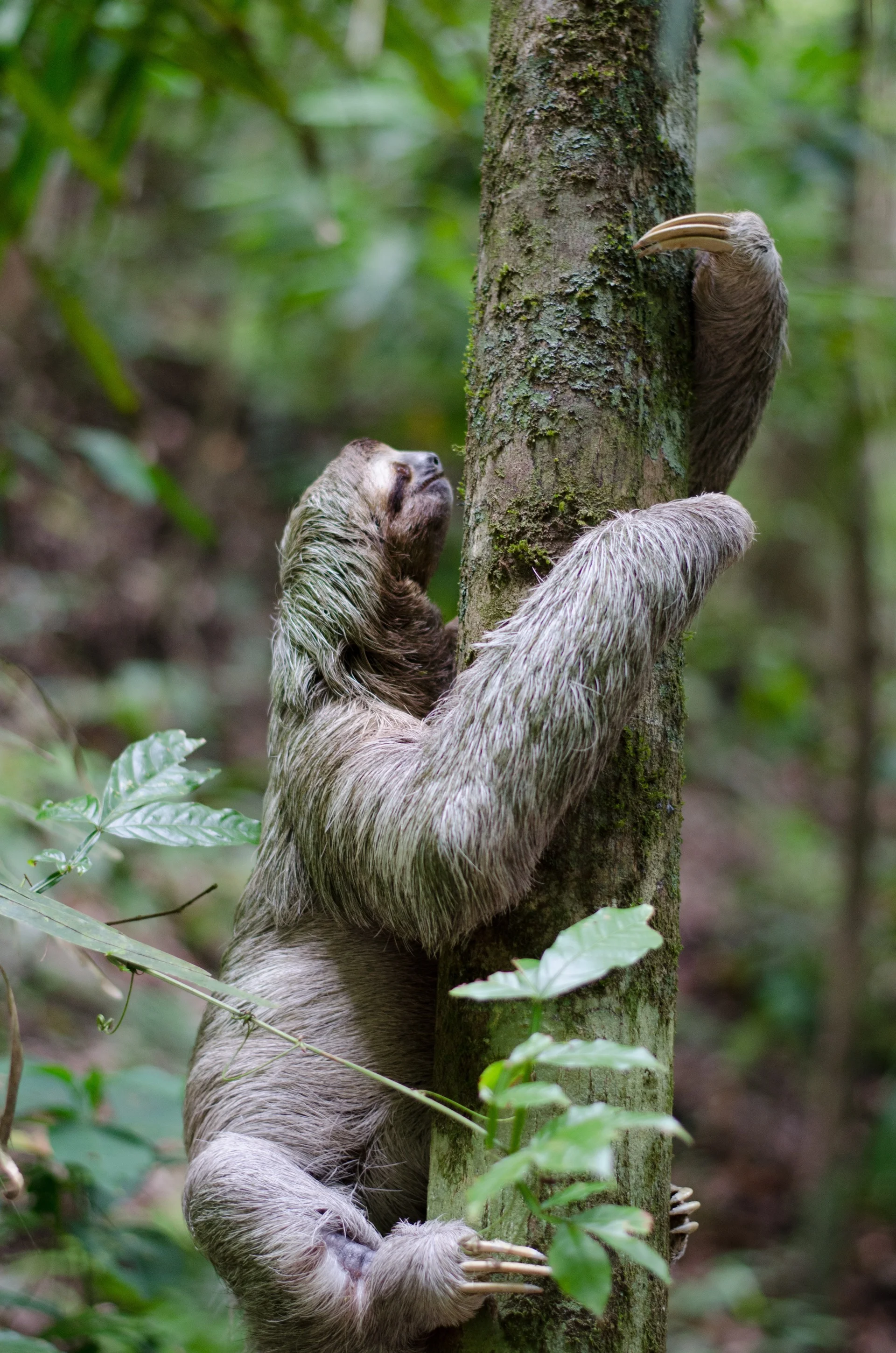Have you heard the phrase "a rolling stone gathers no moss"? The Mythbusters have proved this is true: after rolling a stone continuously for six months, it did not grow any moss. The rolling stone has too much motion for the moss to be able to grow.
But a slow, slow, hanging sloth DOES gather algae. Sloth hair is long and coarse, with good texture for creating a habitat for other organisms. When scientists studied algae on sloth fur, they found that the most common algae was Trichophilus welckeri. Mother sloths pass this on to their babies, so that young sloths are carrying their own algae colonies by the time they are a few weeks old.
So far, the scientists have not found this particular algae in any other environment, meaning that there is likely a unique symbiotic relationship between the sloth and the algae. The hair on two-toed sloth and three-toed sloths is different: two-toed sloths have deep grooves that run the length of each hair; three-toed sloths have irregular cracks across the hair that increase in number with age (hair wrinkles!). So three-toed sloths in particular will get a green-ish tinge to their hair from the algae co-habitating in their hair wrinkles. This makes for good camouflage for our slow moving sloth friends.

